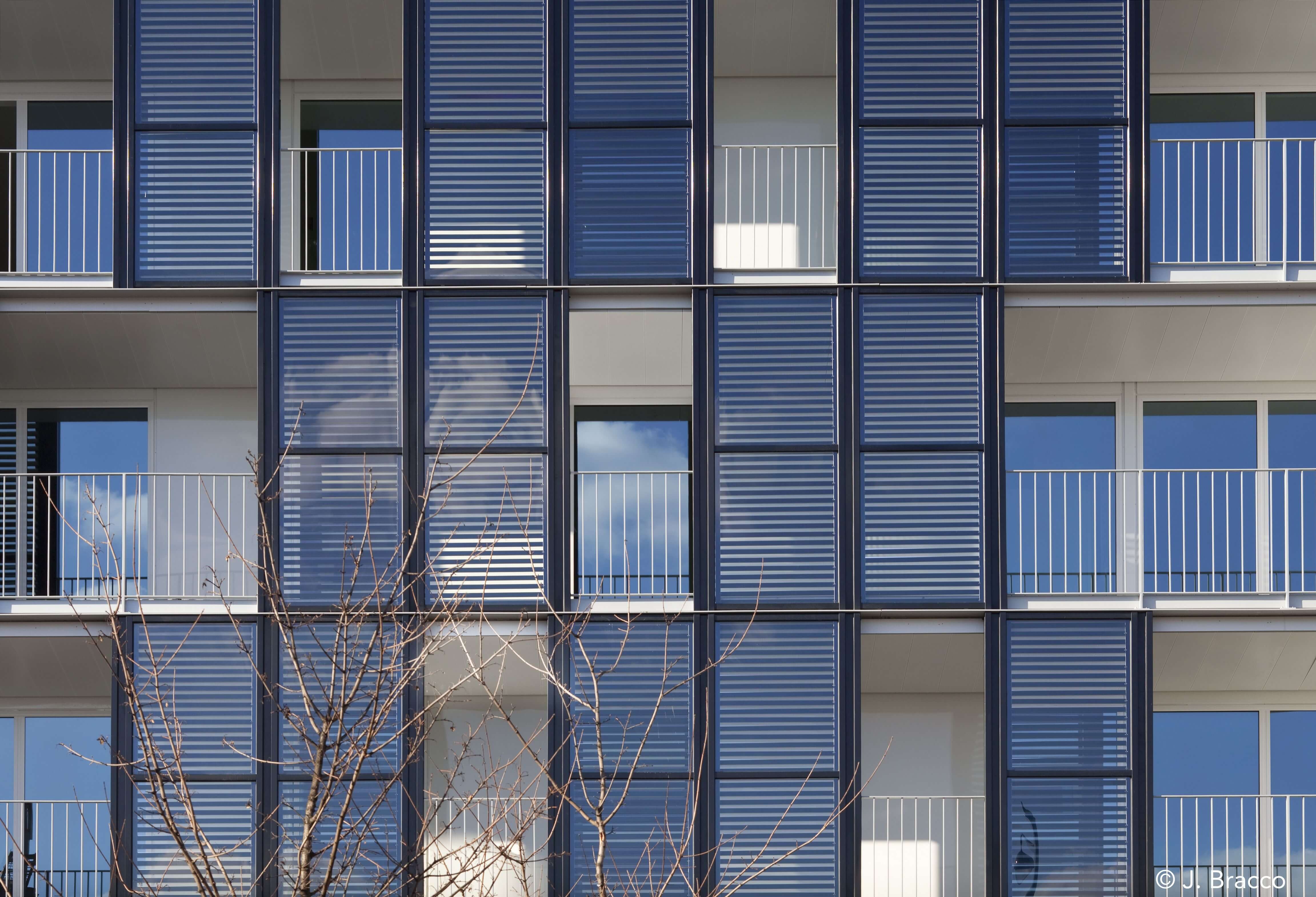| Duration: | April 2015 - March 2018 |
| Contracting Authority/ Sponsors: | German Federal Ministry of Economic Affairs and Energy (BMWi) |
| Project Partners: | Ed. Züblin GmbH, Institute for Numerical Methods and Informatics in Civil Engineering at TU Darmstadt |
| Website: | www.solconpro.de |
| Project Focus: |
SolConPro – Comprehensive Integration of Energetically Active Facade Components into Building Processes

Future energy systems required large areas for the installation of thermal and photovoltaic energy converters. The objective of the “SolConPro” project is the development of the large potential of building envelope areas in a cost-effective, reliable, and efficient manner. The early integration of solar facades into the planning process is essential. Building Information Modeling (BIM) is the central method for this purpose. It is an important basis of the digitalized planning and building process. The results of the “SolConPro” project should facilitate planning and installation of all types of multi-functional components for the building envelope, not only for facades with active solar energy conversion.
The fragmented value chain in the construction sector, with many independent stakeholders each having only partial responsibility, is one of the main obstacles to achieving energy-efficient buildings. Joint data storage with appropriate interfaces for different stakeholders is a basic requirement for better cooperation. Furthermore, functions and tools of the different stakeholders in the construction process must be developed further. Specifically, we are addressing the following aspects:
- Existing approaches to integrated data storage cannot yet map energy-relevant aspects and other facilities (HVAC) to a sufficient extent. For this reason, methods of Building Information Modeling (BIM) are being developed further.
- In addition, quality-assured simulation methods are being developed for planners which treat the multi-functional properties of innovative components and solar energy converters for the building envelope. The higher-level objective is “plug and play” integration into existing planning environments.
- In 2016, work focused on product data model concepts for active facade components and the development of suggestions to integrate the information about active facade components into IFC.
- In addition, possible IT-based solutions were analyzed and newly developed in 2016 to address recurring tasks in the planning and construction process of active solar facades and facilities and to simplify them by applying automated interfaces.